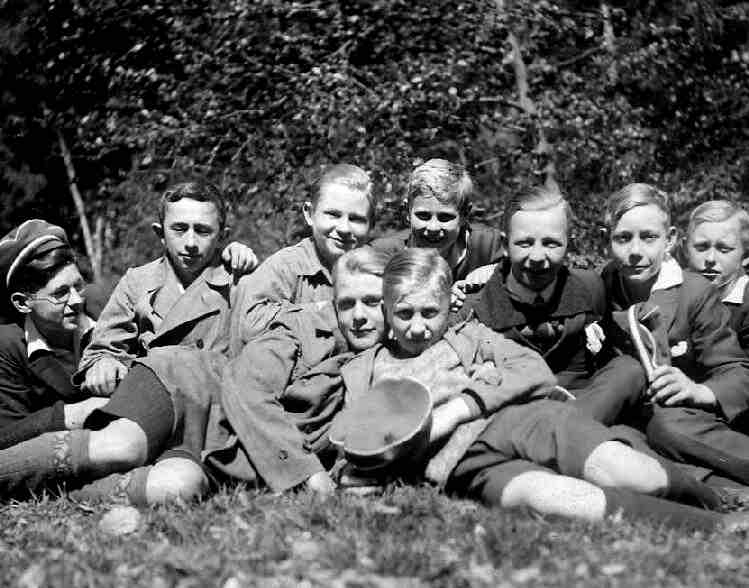
German Secondary Schools: Gymnasien / Oberschulen

Figure 1.--Here is a group of Untersekunda students in 1928. They would be at a Gymnasien / Oberschulen. Notice the school cap. Also notice their ages. They look about 14 years old to me, but our table on school levels suggest boys in this class would be about 15-16 years old.
|
|
The academically selecive seondary schools called grammar schools in Britain were the gymnasium in Germany. Children choose at around 10 years of age whether they want to go to Gymansium that is usually 9 years and than usually to university. The Gymnasien / Oberschulen of imperial Germany were some of the best, if not the best scondary schools in Europe. One reason that so many affluent British children went to private schools was that the state system was deficient. This was not the cas in Germany. In many cases the German children sent to private schools were children from affluent families that were not very academically capable. The German Gymnasien / Oberschulen, however, educated a fairly small proprtion of German children and the academic selectivity was also class selectivity. Many middle-class children went on to these schools from primary school (Grundschule/Volkschule), but relarively few working-class children. Despite its Socialist foundations, very little progress was made by the Weimar Republic to widen the class selectivity of German education. Here the NAZIs made more progress. This in part reflected the declining academic standards of the NAZIs who destrusted Germany's educational establishment upn seizing power in 1933. The NAZIs set about rooting out teachers of questionable loyalty. They also began hieing more politically loyal teachers who often had weaker academic credentials. This probably did not have much impact on primary education, it did on the standards in acafemically demanding secondary schools. By the time of the War, Germany had a thoroughly NAZI-fied educational estanlishment. After the War, political trends continued to affect German education. Teachers with a more Socialist outlook began questioning the advisability of demanding academic stanfards. Ironically this trend seems more pronounced in West than east Germany. Educational policy can be debated. What can not be debated is that that German schools are no longer at the top of the list in comparative studies of academic achievement around the world. Also before World War II, Germany dominated Nobel Prize awards in the sciences. Since the War this has no longer been the case. German indudtry has retained its reputation for craftsman ship, but has fallen behind many other countries in inovation and creativity.
HBC

Related Chronolgy Pages in the Boys' Historical Web Site
[Return to the Main Chronology Page]
[The 1880s]
[The 1930s]
[The 1940s]
[The 1950s]
[The 1960s]
[The 1970s]
[The 1980s]
Related Style Pages in the Boys' Historical Web Site
[Main country page]
[Long pants suits]
[Short pants suits]
[Socks]
[Eton suits]
[Jacket and trousers]
[Blazer
[School sandals]
Navigate the Boys' Historical Clothing School Uniform Pages
[Return to the Main German secondary school page]
[Return to the Main German school level page]
[Return to the Main German school uniform Page]
[Australia]
[England]
[France]
[Italy]
[Japan]
[New Zealand]
[Scotland]
[United States]
Navigate the Boys' Historical Clothing Web Page
[Introduction]
[Activities]
[Biographies]
[Chronology]
[Clothing styles]
[Countries]
[Bibliographies]
[Contributions]
[FAQs]
[Glossaries]
[Images]
[Registration]
[Tools]
[Boys' Clothing Home]
Created: 4:55 AM 4/7/2007
Last updated: 4:55 AM 4/7/2007




